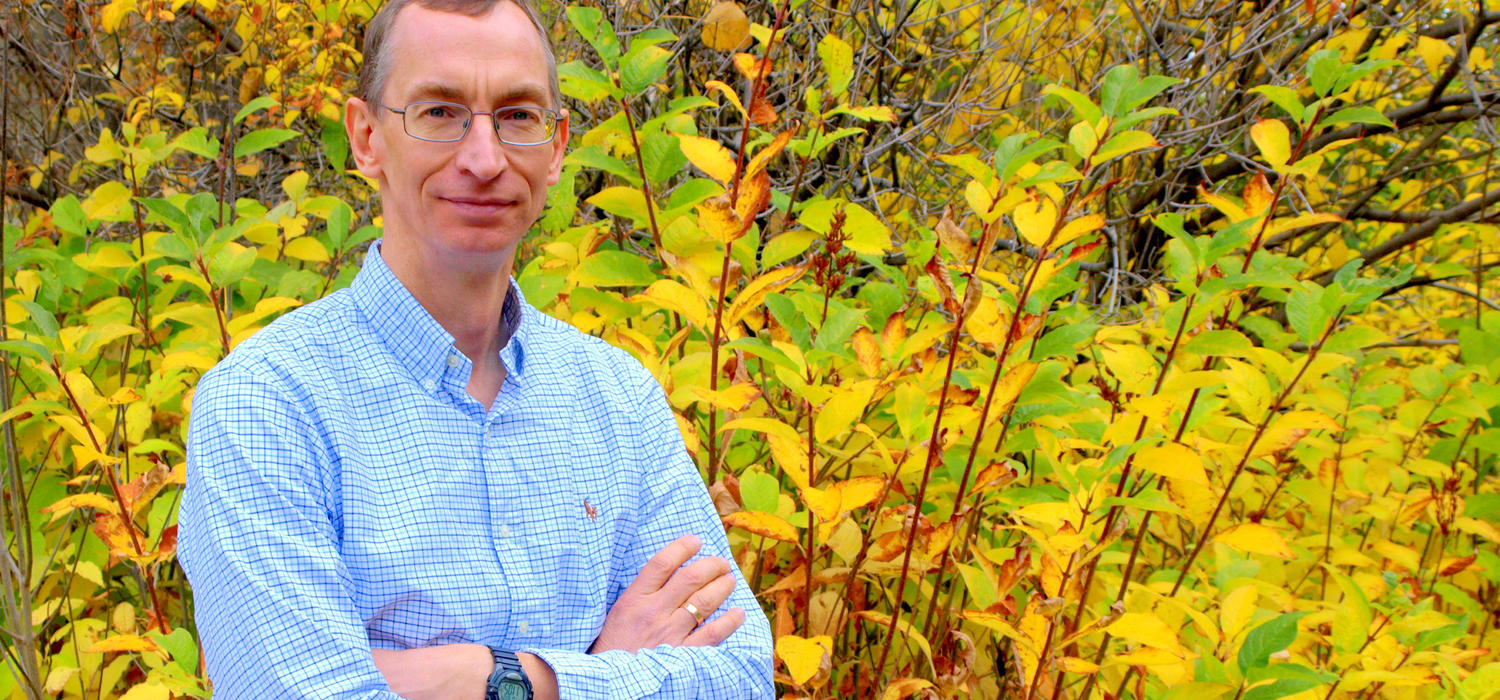Oct. 19, 2016
Willy Hunter believes changes to STEM teaching essential

There’s a lot of discussion these days about Science, Technology, Engineering, and Mathematics, or what are commonly known as the STEM subjects.
And while it might be natural to think of them as separate subjects, researchers have discovered that the key to successful teaching of STEM subjects is in their integration with each other and with other areas of learning.
A second challenge arises with the STEM disciplines in that they are often separated from students’ lives and that they’re not taught in any real-life context. Asks Willy Hunter, “How much of your experience in learning the STEM disciplines was taught to you in the hope that you might need this information two or five, or even eight years later?”
“You might have asked, ‘When will I ever use this?’ This just-in-case approach to learning only works for a small fraction of society.”
Hunter, a professor of chemistry and the director of the Center for Mathematics, Science, and Technology at Illinois State University, works with beginning and in-service teachers in rural and urban school districts including the Chicago Public Schools and the Los Angeles Public School District. He teaches online graduate courses to 1400 science teachers all across the United States, and a current project he’s working on involves visiting some of those teachers to assess the impact of STEM courses on their students.
And now, Hunter is also a Fulbright Visiting Research Chair in STEM Education in the Werklund School of Education.
Combination of subject integration and age-appropriate material key to engagement
Hunter has focused his research on the premise that the key to success is an integration of as many of the STEM disciplines simultaneously as is possible. He combines this theory along with the theory that concepts and tasks assigned to students must be at a level that will engage them, based on their current level of development.
“We have ample evidence that our current way of teaching the STEM disciplines only works for about five percent of the population,” says Hunter. “Our world faces significant challenges, many which have a technical solution, but we need far more than five percent of the population to be able to contribute to the solutions.”
“Think about what we could achieve if we had more of the world’s minds focused on solving these sorts of problems. The STEM disciplines are best when they engage people in those activities.”
For the next three months Hunter will work alongside colleagues in the Werklund School to support STEM practices by examining the role teachers play as catalysts for change in the way STEM subjects are taught.
“UCalgary has, and continues to build, a reputation and strength for technological advances, and a desire to be a leader in the STEM disciplines, so it was a natural fit,” he says.
While in Calgary, Hunter will explore integrated STEM environments--how they are implemented and assessed. He’ll visit schools in the Calgary area, and later in his research, in California and Texas, to interview teachers across the K-12 spectrum about their experiences integrating the STEM disciplines. “I’m trying to understand what allows them to be successful and what challenges they face.”
“When I get back to Illinois State, we will modify courses and K-12 curricula to reflect what we have learned.”
